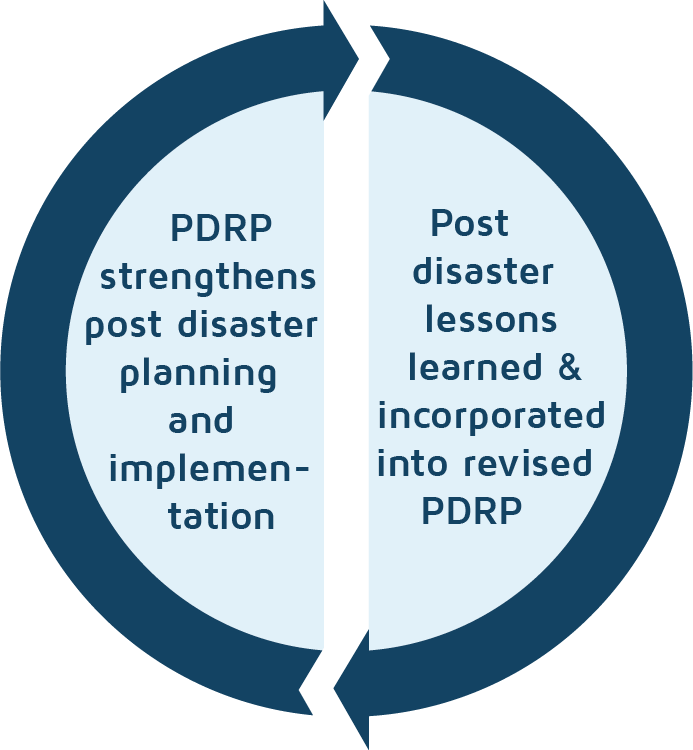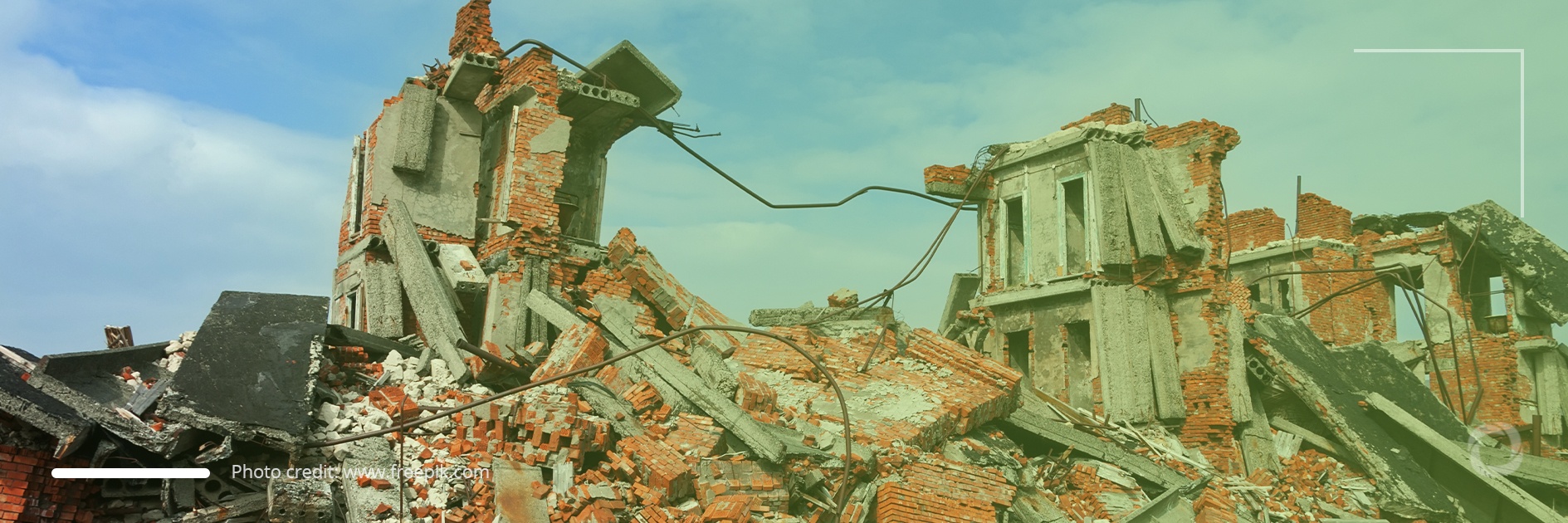What is a disaster?
A disaster refers to a sudden accident or a natural calamity that has a serious impact on a community by causing significant human, economic, material, or environmental losses. A calamitous event becomes a disaster when its impact exceeds a community’s ability to cope with it using the available resources. Natural disasters kill, on average, 60,000 people per year which represents 0.1% of global deaths. Last year, 2020, is considered to be one of the most challenging years in modern history registering 416 notable natural disasters in addition to pandemic-related events, causing direct economic losses and damages amounting to about US$268 billion.
Follow this link to learn more about the economic impact of natural disasters in 2020
Pre-disaster recovery planning
The majority of the conventional approaches of responding to disastrous events refer to the post-disaster efforts of humanitarian assistance and emergency management procedures. Nonetheless, public authorities are encouraged by organizations such as the United Nations to develop and implement Pre-Disaster Recovery Planning (PDRP) programs to strengthen disaster recovery plans before such a situation occurs. PDRP programs enable governments to locate and involve strategic partners, identify potential risks, build consensus on recovery goals and develop capacities to efficiently manage recovery operations.
Fig.1. Recovery planning cycle

Pre-disaster planning efforts should go hand-in-hand with post-disaster planning activities as both preparatory stages are important in setting up strategies that can efficiently respond to the unpredictable impacts of disastrous events.
Phases of disaster recovery
The International Strategy for Disaster Reduction (ISDR), which is a focal point in the United Nations system, defines recovery as the totality of decisions and actions taken in response to a disaster aiming at an efficient response to the immediate challenges, restoring socio-economic infrastructures and improving post-disaster living conditions of the affected communities. Thus, the process of disaster recovery can refer to the following actions:
- Gradually shift the focus from immediate emergency response to restoring livelihoods
- Take preventative actions to limit the risk of the recurrence of crises
- Strengthen further response capacities
- Empower communities
- Determine/address the root causes and vulnerabilities
Since each disaster event is unique, the broadness and seriousness of the damage it may cause remain unpredictable. Therefore, in their initial response, authorities are encouraged to perform primary assessments, gather information, and determine which resources, partners, and assets are available to respond to the affected communities. Nevertheless, there are several phases of disaster recovery that unfold as communities begin to rebuild after disasters
![]() Assessment – an initial assessment has to be conducted to gain a better understanding of the situation, ongoing risks, and the impacts of the disaster
Assessment – an initial assessment has to be conducted to gain a better understanding of the situation, ongoing risks, and the impacts of the disaster
![]() Search and Rescue operations need to be initiated as soon as possible following the event in order to save lives in imminent danger. Such operations may extend to hours or even weeks after the disaster
Search and Rescue operations need to be initiated as soon as possible following the event in order to save lives in imminent danger. Such operations may extend to hours or even weeks after the disaster
![]() Emergency Relief – authorities have to take sufficient measures to ensure that the basic needs of people affected by the disaster are met. This includes providing people with food, water, shelter, and medicines. Those with severe injuries need to be offered urgent medical help and care
Emergency Relief – authorities have to take sufficient measures to ensure that the basic needs of people affected by the disaster are met. This includes providing people with food, water, shelter, and medicines. Those with severe injuries need to be offered urgent medical help and care
![]() Early Recovery – refers to a transition from a state of emergency to one of recovery. Communities can resume some kind of normal existence and start working on restoring socio-economic infrastructures
Early Recovery – refers to a transition from a state of emergency to one of recovery. Communities can resume some kind of normal existence and start working on restoring socio-economic infrastructures
![]() Community Development – represents the transition phase from relief to development where the affected communities start working on improving livelihoods, quality of life, and overall wellbeing. During this phase, communities will often learn and strengthen to become more resilient in the event of another disaster.
Community Development – represents the transition phase from relief to development where the affected communities start working on improving livelihoods, quality of life, and overall wellbeing. During this phase, communities will often learn and strengthen to become more resilient in the event of another disaster.
Needless to say, these phases should unfold sequentially with the maximum effort from all the state institutions and civil society involved in disaster relief.
DevelopmentAid is the leading provider of business intelligence and recruitment tools designed to assist those active in the development sector. Join today and gain access to exclusive information on the upcoming funding opportunities (tenders and grants) from the largest bilateral and multilateral donors.

